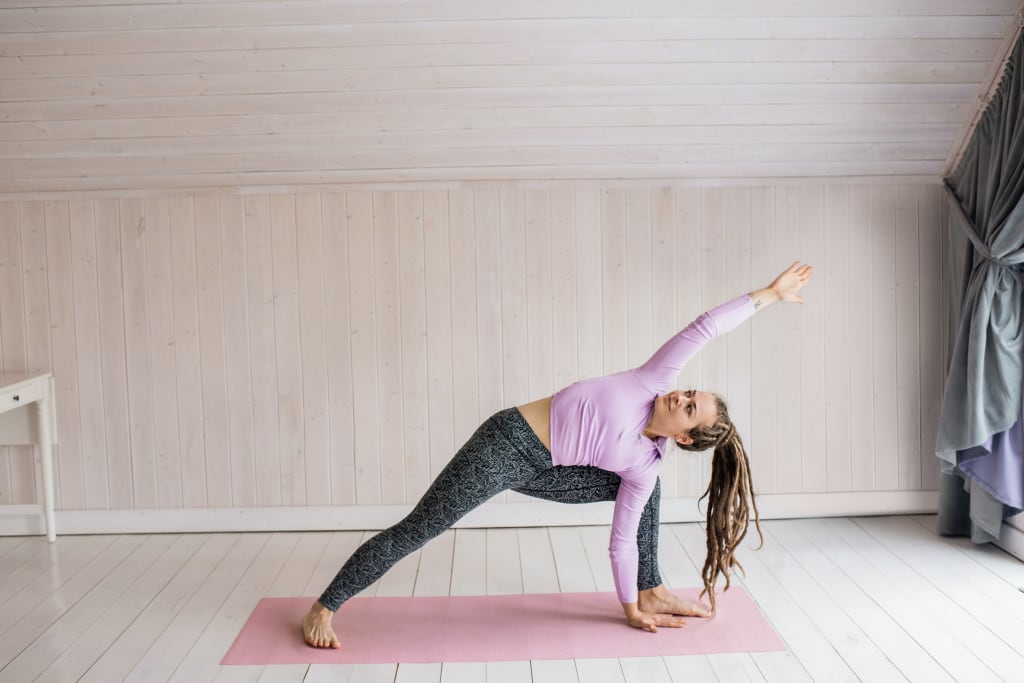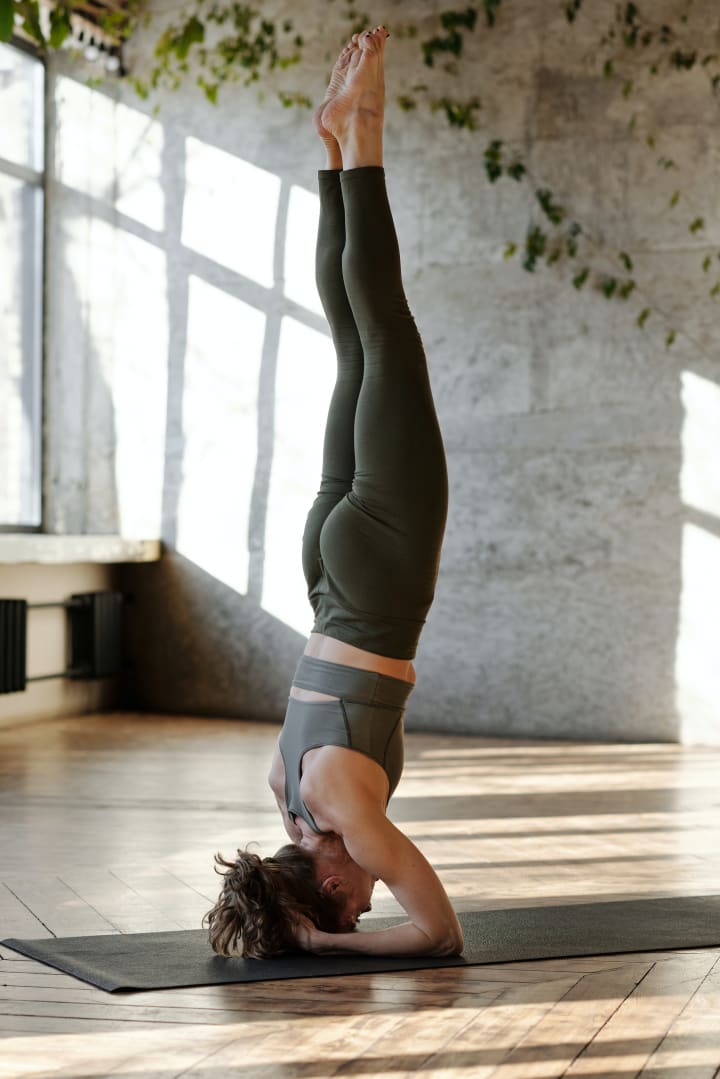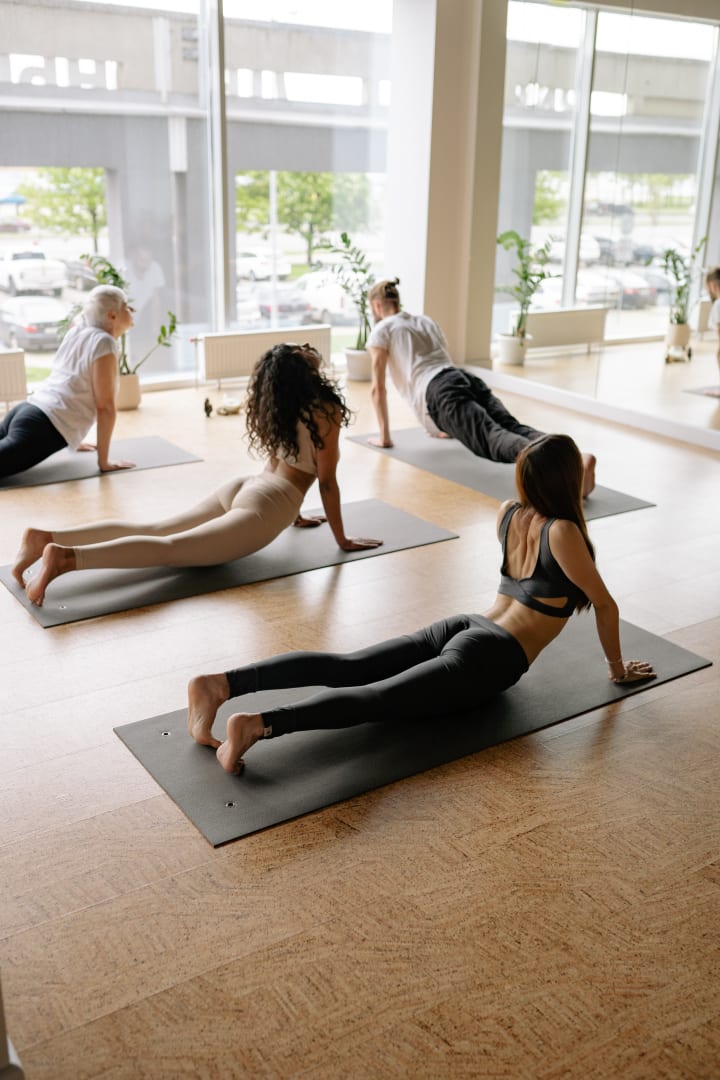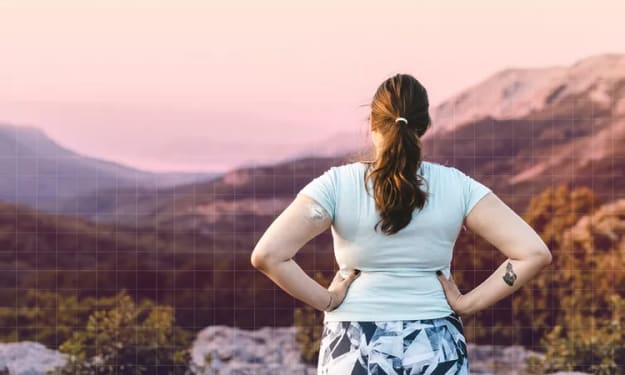
YOGA
It's time to get out your yoga mat and explore the unique blend of physical and mental activities that have enthralled yoga practitioners all around the world for thousands of years. Yoga's beauty is that you don't have to be a yogi or yogini to benefit from it. Yoga has the ability to soothe the mind and strengthen the body, whether you are young or elderly, overweight or fit. Don't be put off by yoga terminology, pricey yoga studios, or difficult positions. Everyone can benefit from yoga.
What Is Yoga
Yoga is more than just a physical workout; it is a complete mind-body workout.
A yoga session is made up of a series of specialized exercises called postures, as well as precise breathing methods and meditation principles. There are changes and adaptations that can be done to help students if a pose causes pain or proves to be too challenging. Blocks, blankets, straps, and even chairs can be utilized as props to help you get the most out of the poses. Yoga is not a one-size-fits-all exercise: the optimum yoga workout for you will be determined by your specific demands and objectives.
The advantages of practicing yoga on a regular basis are numerous. According to Roger Cole, PhD.., a psycho-biologist and certified Iyengar yoga teacher, a thorough yoga workout can help maintain your back and joints healthy, improve your overall posture, stretch and strengthen muscles, and improve your balance. According to Dr. Cole, yoga has a "restorative component that is very calming and renewing." "Every yoga session includes relaxation."
According to Dr. Timothy McCall, author of "Yoga as Medicine," yoga's concentration on the breath can help you relax and learn to be more aware of your body, which can help you move more easily.
Yoga has been shown to provide a wide range of health advantages in recent years by a growing body of studies.
Yoga has been shown in studies to help:
- Reduce back pain: Weekly yoga lessons treat low back pain symptoms just as effectively as intense, frequent stretching sessions.
- Strengthen bones: A tiny study found that yoga practitioners had higher bone density in their spine and hips than those in a control group.
- Improve balance: After 10 weeks of yoga lessons, male athletes in one research had greater balance than a control group of athletes who did not adjust their habits.
- Prevent mental decline: In one study, people who took a combination of yoga and meditation instead of a brain-training exercise scored considerably better on a test of visuospatial memory, which is critical for balance, depth perception, and the capacity to recognize things and navigate the world.
- Reduce stress: Iyengar yoga was proven to help reduce mental distress as well as the psychological and physical signs of stress in a study of 72 women.
- Relieve Depression: Yoga was demonstrated to relieve depression and anxiety in a study of coal miners with chronic obstructive pulmonary disease, or C.O.P.D.
But Not From Another Country
Because yoga is based on ancient Indian philosophy, yoga postures have both Sanskrit and English names — for example, adho mukha svanasana is also known as downward-facing dog — and you may hear both in a session.
Even if you've never taken a yoga class, you're probably familiar with several yoga poses. Have you ever tried a plank? You've practiced yoga.
Yoga is being incorporated into more traditional workouts by trainers and fitness groups all over the world, as well as college and professional sports teams, as a powerful type of mind-body conditioning that helps athletes breathe better and boost their attention.
The Seattle Seahawks and Los Angeles Clippers, for example, practice yoga in a team setting, and many top sports professionals, including the basketball star LeBron James and the tennis champion Novak Djokovic have incorporated yoga into their training programs.
“The attention-focusing and alignment-honing potential of a yoga practice is a solid complement to more athletic, explosive and calisthenic endeavors,” says Derek Cook, a former personal trainer
Types of Yoga

There are many types of yoga. Some are physically demanding and leave you sweating, while others are soothing and relaxing.
Hatha: The majority of yoga forms taught in the United States today are a type of hatha yoga, which is a broad phrase that refers to the physical aspect of yoga rather than yoga philosophy or meditation. A Hatha yoga class will most certainly consist of a variety of poses and breathing exercises, but it's difficult to predict whether it will be difficult or mild. To learn more about the level of lessons that are merely defined as Hatha yoga, contact the school or the teacher.
Ashtanga Yoga: This is a difficult style of yoga focusing on a progressive series of yoga sequences that students traditionally practice on their own with the help of a teacher. You haven't tried an Ashtanga class if you think yoga isn't a workout. Advanced postures such as arm balances and inversions such as headstands and shoulder stands are included in the classes. It is strongly recommended that beginners study with an experienced teacher. Yoga philosophy will frequently be taught in Ashtanga sessions.
Power Yoga: As the name implies, power yoga is a strenuous kind of yoga aimed at increasing strength. These lessons will involve advanced postures and inversions that require a lot of strength, such as headstands and handstands.
Vinyasa or Flow: These courses normally consist of an active flowing series of yoga poses that may include advanced poses like arm balances, headstands, shoulder stands, and handstands, depending on the level. Many vinyasa sessions feature musical accompaniment chosen by the teacher.
Iyengar: Interested in learning more about how your muscles and joints interact? This is the yoga you've been looking for. Iyengar yoga emphasizes the accuracy of your yoga positions. Iyengar classes are noted for using props like blankets, blocks, belts, and bolsters to help students achieve postures they wouldn't otherwise be able to achieve. Ropes connected to the walls can also be used in classes to perform inversions and other positions. Breathing exercises and connections to yoga philosophy are also common.
Bikram or Hot Yoga: Like the heat? Try Bikram or Hot Yoga. Bikram yoga is a set of 26 poses practiced in a 105-degree environment, which is supposed to allow for deeper stretching and a stronger cardiovascular workout. Bikram yoga classes, unlike typical yoga classes, are always held in rooms with mirrors. Any yoga class that takes place in a heated atmosphere — usually between 80 and 100 degrees — is referred to as hot yoga.
Restorative Yoga: Restorative yoga is for you if you want to get a little extra relaxation out of your yoga lesson. This yoga technique typically consists of a few relaxing positions sustained over extended periods of time. Light twists, sitting forward folds, and soft backbends are among the restorative poses, which are frequently performed with the use of a variety of props such as blankets, blocks, and bolsters.
Yin Yoga: Looking for a different kind of stretching experience? Try Yin Yoga. Yin yoga aims to develop flexibility by stretching the connective tissue surrounding the pelvis, sacrum, spine, and knees. In yin yoga courses, poses are held for extended periods of time, usually three to five minutes. It's a silent kind of yoga that will rapidly test your ability to sit motionless.
Yoga and Meditation

Yoga was primarily a meditative technique for thousands of years before it became a popular physical activity.
Yoga and Mindfulness
You will be instructed to notice your breath and the way your body moves during the exercises in a yoga class as you learn to practice yoga positions. The foundation of a mind-body relationship is this.
A well-balanced series of yoga exercises allows you to scan your entire body while moving through the positions, noting how you feel. You may notice, for example, that one side of your body feels different during a stretch than the other, that it's easier to balance on your right leg, or that specific positions assist relieve neck stress.
Yoga transforms physical activities into tools for pupils to become more conscious and even learn to meditate in this way.
Stephen Cope, a yoga and mindfulness instructor at the Kripalu Center for Yoga and Health in Massachusetts, has noted that learning to focus in this way can benefit us both within and outside of yoga classes. Mr. Cope states in his book "Yoga and the Quest for the True Self" that "when we train our attention, we'll learn to notice our postures throughout the day, not only on the yoga mat."
Learning to be aware of your posture at your desk or when walking, for example, can be the first step toward making improvement that will allow you to move more easily and feel better all of the time.
The Inhalation
Breathing methods are an important component of yoga because they not only help you stay focused while you practice, but they can also help you relax your nervous system and calm your mind.
Elena Brower, a yoga and meditation teacher and author of "Art of Attention," argues that yoga breathing methods can also be used as a "way into meditation." More people who have focused on the physical components of yoga in recent years are going toward meditation, according to Ms. Brower, because "they have a growing desire to have time to reflect, release, and re-calibrate."
A yoga class might involve one or more of the following breathing techniques:
The most common breathing method you'll encounter in basic yoga is abdominal breathing, often known as diaphragmatic or belly breathing. In general, it promotes healthy, efficient breathing.
Give it a shot:
- As you inhale, expand your abdomen.
- Exhale as deeply as you can, aiming to empty your abdomen of as much air as possible.
Ujjayi, or "victorious" breath, allows you to calm and smooth the flow of your breath. It is frequently utilized in flow classes to assist students in controlling their breathing while moving through the poses.
Abdominal breathing, also known as diaphragmatic or belly breathing, is the most frequent breathing method used in basic yoga. It improves healthy, efficient breathing in general.
Take a chance:
- Extend your abdomen as you inhale.
- Exhale as deeply as you can, trying to get as much air out of your abdomen as possible.
Ujjayi, or "victorious" breath, allows you to slow down and smooth out your breathing. It's commonly used in flow classes to help students keep their breathing under control while moving through the poses.

Give it a shot:
- Take a deep breath in.
- One-third of your breath should be released.
- Pause.
- Another third of your breath should be released.
- Pause.
- Exhale the remainder of your breath.
- Repeat.
- You can then do a few rounds of interrupted breathing during exhale if you want.
Alternate nostril breathing: This method is supposed to help balance the nervous system and is an useful thing to try before meditation.
Give it a shot:
- Inhale through the open nose while closing one nostril.
- Exhale through the nostril that is open.
- Switch hands and shut the closed nose while blocking the open nostril.
- Inhale via the open nose and exhale through the closed nostril.
- Rep the process numerous times.
Obtain Your Equipment
You don't need anything to begin a yoga practice, but here are some things you might want as you get more advanced.
It's not a problem if you don't have any socks or shoes.
Yoga is usually done on a mat with bare feet. Wearing socks is not suggested because they are slippery. Look for sports socks with rubber grips on the soles if you really want to wear socks.
Mats for Yoga
Mats are available at most yoga studios and gyms, however many yoga students prefer to purchase one for reasons of hygiene and because mats vary in substance, density, and stickiness. You might discover that you have a strong preference for a particular type of mat.
Choose a mat that stops you from slipping and sliding so you may transition from one pose to the next with confidence. Antibacterial wipes should be used to clean your mat on a regular basis. If you plan to rent mats at your studio or gym, having a small packet of antibacterial wipes on hand to clean your rental mat is a wonderful idea.
Clothes
It is suggested that you dress comfortably. Any workout attire would be appropriate for a yoga class. However, if you proceed into headstand and handstand poses, clothing that is too loose may get in the way.
Getting Started with Yoga

If you want to get the most out of yoga, you'll need to find a method to include it into your daily routine.
Look for a Class
Yoga can be done at home, but it's crucial to take a class or two with a seasoned instructor, either privately or in a group setting, to ensure that you're doing the yoga movements safely.
Look for a certified yoga instructor with at least a 200-hour teaching certificate from a Yoga Alliance-accredited teacher-training program. These programs involve injury prevention training. If you have any medical issues, consult a doctor before beginning yoga to determine which styles of yoga are appropriate for you.
Developing a Routine
When beginning a yoga practice (or any new health habit), the most important thing to remember is that consistency is the key to success. Dr. McCall recommends starting small and manageable. Yoga for ten or fifteen minutes a day could be more beneficial than coming to one class a week. Dr. McCall says, "I'd rather have a pupil succeed at a one-minute-a-day practice than fail at a five-minute-a-day practice."
As you begin to realize the benefits of your daily practice, however brief, you will most likely be persuaded to do more.
About the Creator
Prakuzo
I Write Health and Fitness, Personal Growth and Spirituality






Comments
There are no comments for this story
Be the first to respond and start the conversation.